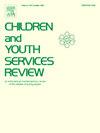Academic achievement of undergraduate health students: Effect of learning styles and personal-familial factors
IF 2.4
2区 社会学
Q1 FAMILY STUDIES
引用次数: 0
Abstract
This study aimed to investigate the relationship between academic achievement and learning styles, personal characteristics (e.g., age, gender), and family characteristics (e.g., family structure, income) among undergraduate health sciences students. The study included 735 undergraduate students from four health sciences departments—Physiotherapy and Rehabilitation, Nutrition and Dietetics, Health Management, and Nursing—each with a four-year curriculum. Learning styles were assessed using the Index of Learning Styles, while academic performance was measured by Grade Point Averages (GPA) ranging from 1.00 to 4.00. Students with a GPA below 3.00 were categorised as low achievers (n = 499), and those with a GPA of 3.00 or higher as high achievers (n = 236). The Mann-Whitney U test compared numerical data, and the chi-squared test analysed categorical variables. Significant differences in daily leisure time, daily study time, gender, department, high school graduation type, and accommodation were observed between low and high achievers (p < 0.05). However, age did not significantly differ between groups (p > 0.05). Among family factors, no significant differences were found in family structure, family income, or paternal education level (p > 0.05), but maternal education level showed a significant difference (χ2 = 27.371, p < 0.001). Visual/verbal learning styles differed significantly between groups (χ2 = 7.024, p = 0.03), while no significant differences were found for active/reflective, sensing/intuitive, or sequential/global learning styles. The study highlights the significant impact of personal and family characteristics on the academic success of health sciences students, emphasizing the crucial role of learning styles in academic achievement. These findings can inform strategies to enhance academic performance in health sciences education.
本科卫生系学生学业成绩:学习方式与个人家庭因素的影响
摘要本研究旨在探讨健康科学本科学生学业成绩与学习风格、个人特征(如年龄、性别)和家庭特征(如家庭结构、收入)的关系。这项研究包括来自四个健康科学系的735名本科生——物理治疗与康复、营养与饮食学、健康管理和护理——每个系都有四年的课程。学习风格是用学习风格指数来评估的,而学习成绩是用平均绩点(GPA)来衡量的,平均分在1.00到4.00之间。平均绩点低于3.00的学生被归类为低成就学生(n = 499),平均绩点在3.00以上的学生被归类为高成就学生(n = 236)。Mann-Whitney U检验比较数值数据,卡方检验分析分类变量。在日常休闲时间、日常学习时间、性别、系、高中毕业类型和住宿方面,低、高成就生之间存在显著差异(p <;0.05)。然而,年龄在两组间无显著差异(p >;0.05)。在家庭因素中,家庭结构、家庭收入、父亲受教育程度无显著差异(p >;0.05),但产妇受教育程度差异有统计学意义(χ2 = 27.371, p <;0.001)。视觉/语言学习风格在组间差异显著(χ2 = 7.024, p = 0.03),而主动/反思、感知/直觉或顺序/全局学习风格无显著差异。该研究强调了个人和家庭特征对健康科学学生学业成功的显著影响,强调了学习方式在学业成就中的关键作用。这些发现可以为提高健康科学教育的学习成绩的策略提供信息。
本文章由计算机程序翻译,如有差异,请以英文原文为准。
求助全文
约1分钟内获得全文
求助全文
来源期刊

Children and Youth Services Review
Multiple-
CiteScore
6.30
自引率
6.10%
发文量
303
期刊介绍:
Children and Youth Services Review is an interdisciplinary forum for critical scholarship regarding service programs for children and youth. The journal will publish full-length articles, current research and policy notes, and book reviews.
 求助内容:
求助内容: 应助结果提醒方式:
应助结果提醒方式:


